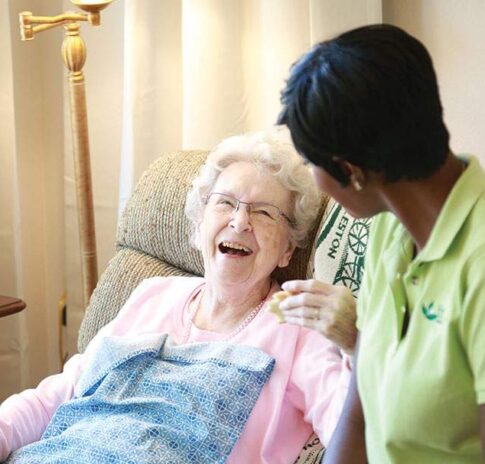Osteoporosis is known as the “silent disease” because many people do not realize they have it until they fall or experience a fracture. There are certain things we know: osteoporosis is a disease in which the bones become more and more fragile as they lose density, usually due to aging, menopause, and other factors like lack of calcium and vitamin D in the diet.We know that osteoporosis is predicted to affect as many as half of all Americans over age 50 by the year 2020.
However, there are still many myths and misconceptions surrounding the illness which FirstLight Home Care would like to explain so you can more accurately prevent and cope with this debilitating illness:
- Only women are prone to osteoporosis. While it is true that women are more susceptible to osteoporosis (particularly Caucasian), it can afflict men and
people virtually of any race or age. Unfortunately, more and more young women
and men are being diagnosed with osteoporosis due to hormonal imbalances and poor nutrition. Between one-quarter and one-third of all hip fractures occur in men and estimates show that 30% of all men over 50 will have an osteoporosis-related fracture during their lifetime. - If you have osteoporosis, you can feel your bones getting weaker. In the early stages of osteoporosis, you may have no symptoms. Most people do not realize they have osteoporosis until they fall or fracture a bone.
- The osteoporosis test exposes you to too much radiation. One of the best ways to diagnose osteoporosis is through a bone mineral density test using a central DXA (dual energy x-ray absorptiometry) machine. It is totally painless, takes 5-10 minutes and uses very little radiation. According to the National Osteoporosis Foundation, you are exposed to 10-15 times more radiation from flying in a plane roundtrip between New York and San Francisco.
- Your bones don’t grow after adolescence. Although most of us think our bones stop growing after young adulthood, making healthy lifestyle choices when you’re older can still have a positive impact on your skeleton, says Felicia Cosman, MD, clinical director of NOF. “Even small gains add up over time,” she adds. According to research from Tufts University, postmenopausal women who did strength-training twice a week for a year gained 1 percent to 2 percent in bone density. Any weight-bearing workout can provide similar benefits. The key: Keep increasing the intensity.
- If you drink a lot of milk and exercise, you won’t suffer from osteoporosis. Although drinking milk and exercise are important to preventing osteoporosis, there are other risk factors which can contribute to the disease. These can include: a family history, having a low body weight, too much sodium and caffeine and lack of Vitamin D.
- Consuming a lot of calcium will prevent osteoporosis. Taking an excessive amount of calcium does you no good because your body cannot absorb it. Instead, estimate the amount of calcium you get from foods on a typical day to determine whether a supplement is right for you.
- Osteoporosis is a common illness all over the world. Unfortunately, the United States has the highest incidence of osteoporosis, but there are other areas where this disorder is relatively rare, even among the older segments of the population. Singapore and Hong Kong have relatively low rates of osteoporosis and many African cultures are almost immune to osteoporosis.
If you or a loved one are suffering from osteoporosis and need in home care, FirstLight Home Care is ready to help. Find about more about our care options.
